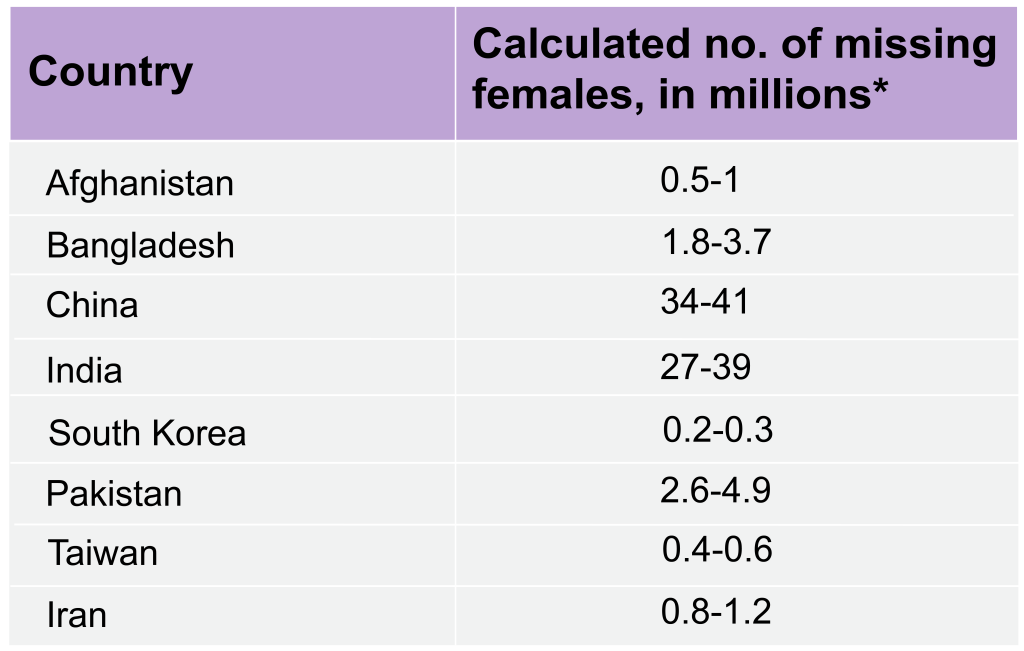11.12 Male bias and extreme sex ratios
Consider the data compiled by Abrevaya: [1]

Note a clear pattern of increasing male births in South Korea, China, and India, largely associated with increased access to ultrasound and selective-abortion technology. In one study of abortion clinics in India, of 8000 abortions that followed a sex-determination procedure,7,999 were of female fetuses. In another study, not a single one of 250 identified male fetuses were aborted. In the city of Taegu, South Korea, a sex ratio of approximately 1.0 in 1980 became a sex ratio between 1.2 and 1.3 in 1990. That’s roughly 125 males for every 100 females carried to term.
These modern techniques of sex-selection follow a history of neglect or infanticide of female offspring, practices that are well documented in the literature and have led to some dramatically skewed sex ratios. Some villages in India have documented ratios as high as 100:31. When these ratios are extrapolated to populations of tens of millions of people, the inevitable consequence is millions of “missing girls.” The following data summarize this phenomenon of millions of missing girls in Asia.

These data give rise to myriad additional questions: Why is there such a strong bias for sons? Does this bias exist outside of Asia? Do these preferences increase with decreasing fertility, such as during China’s “One Child Policy” of the recent past?
One thing that does seem fairly well documented is that these preferences do not seem to be driven by the mother. Several studies have illustrated that mothers have little expressed preference for sons over daughters, while fathers around the world tend to prefer sons. A study of sex ratios gives us never-ending food for thought!
Read More
Read more here and check out some interactive graphs!
- Abrevaya, J. (2009). Are there missing girls in the United States? Evidence from birth data. American Economic Journal: Applied Economics, 1(2), 1–34. https://doi.org/10.1257/app.1.2.1] ↵
- [from Hesketh, T., & Xing, Z. W. (2006). Abnormal sex ratios in human populations: causes and consequences. Proceedings of the National Academy of Sciences of the United States of America, 103(36), 13271–13275. https://doi.org/10.1073/pnas.0602203103, using data from Hudson V.&Den Boer, A.M. (2004) Bare Branches: The Security Implications of Asia’s Surplus Male Population (MIT Press, Cambridge, MA) and Klasen, S. & Wink, C. (2002) Popul. Dev. Rev. 28, 285–312.] ↵

